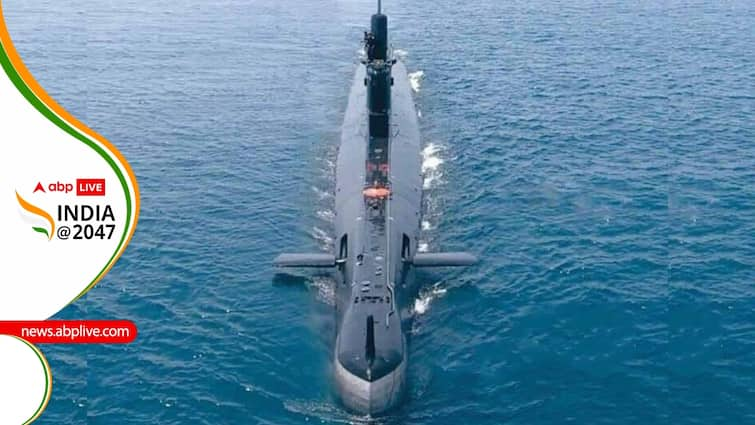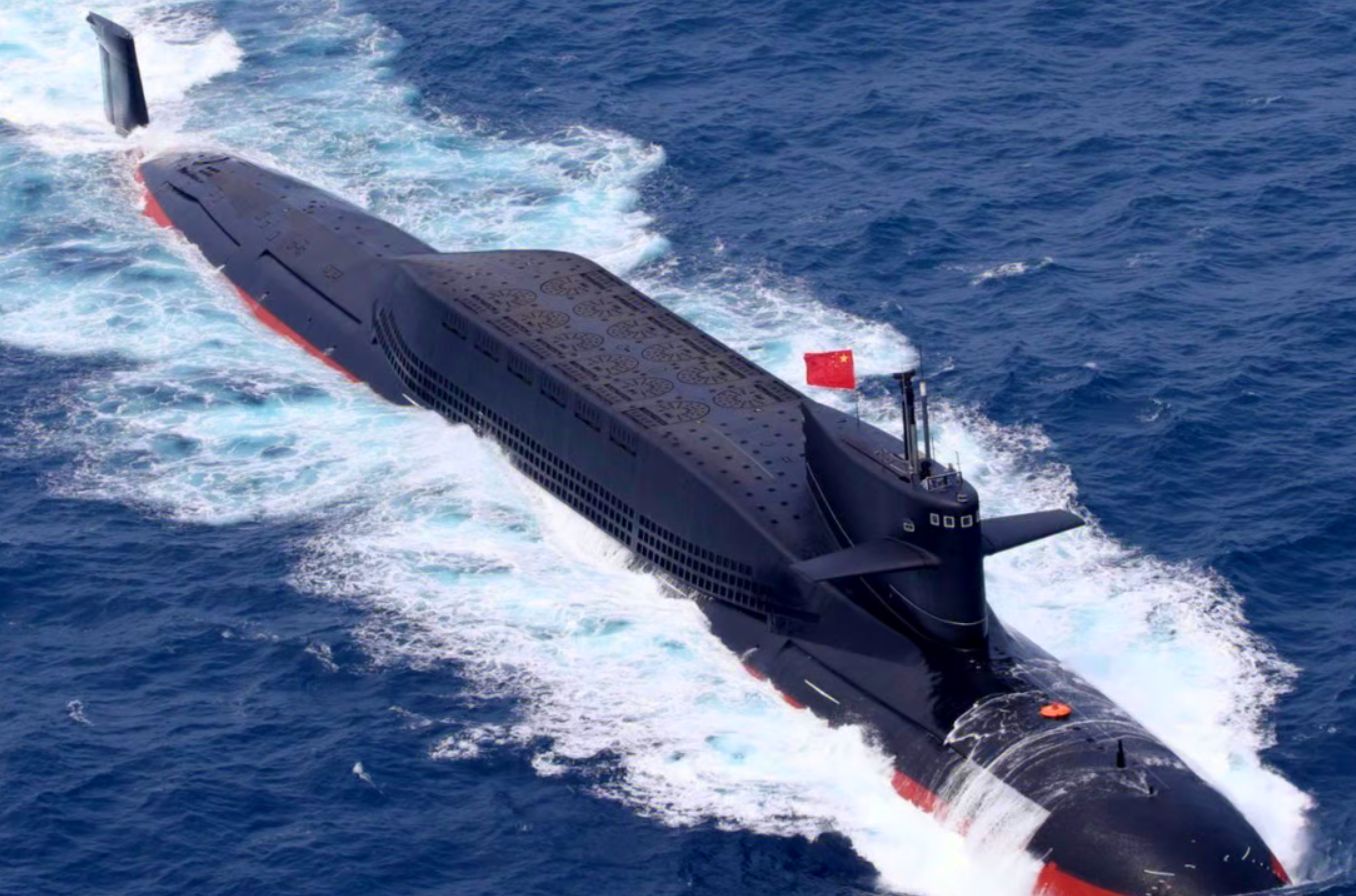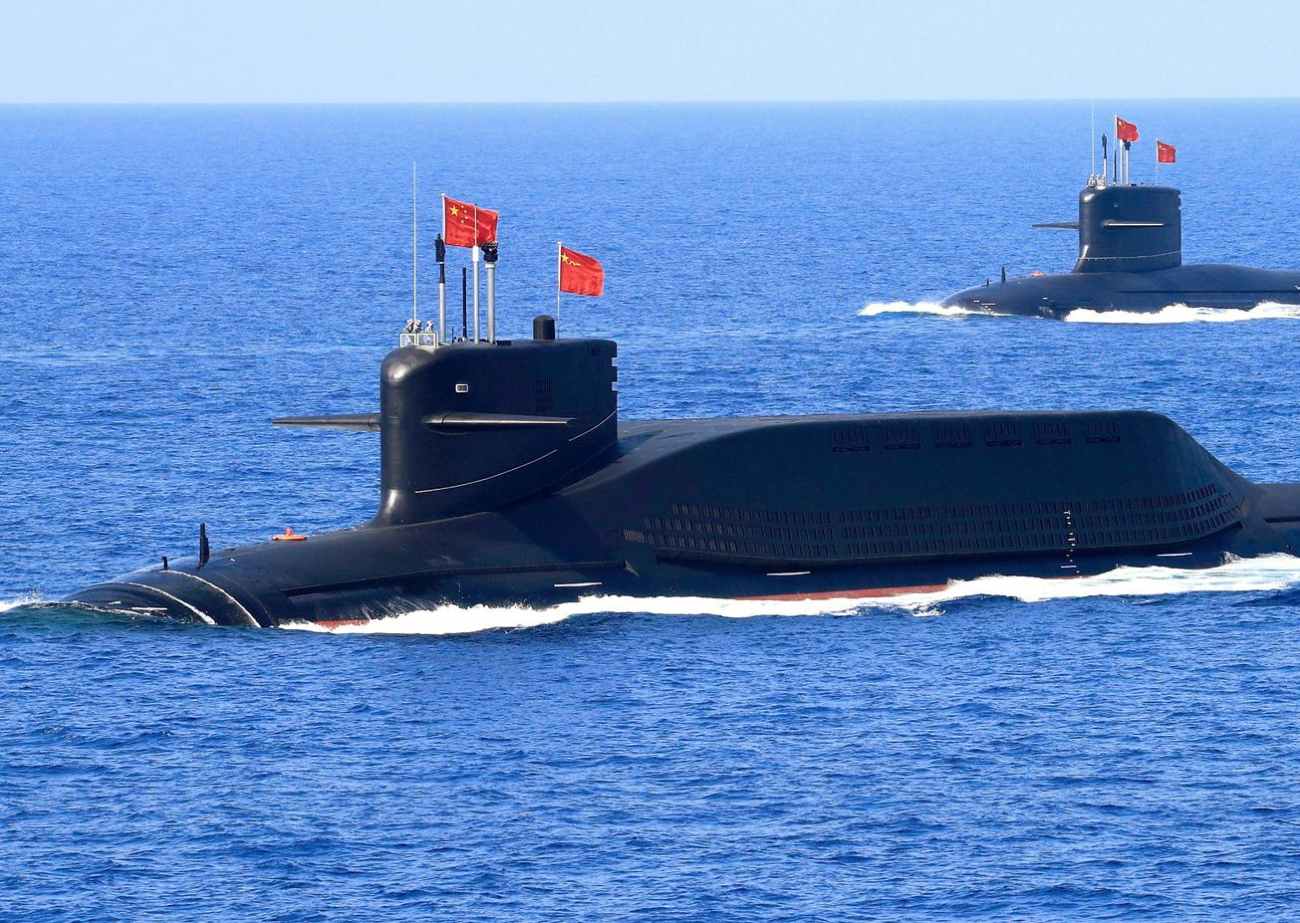Saif
Senior Operative
- 13,311
- 7,274
- Origin

- Axis Group

- Copy to clipboard
- Thread starter
- #9

Why Bangladesh’s China-Funded Pekua Submarine Base Will Prove To Be A Migraine For India
Damien Symon, who goes by the ID ‘detrestfa’ on the social media platform X, last month released a satellite image of a dry dock developed at the China-built base in Bangladesh.
Why Bangladesh's China-Funded Pekua Submarine Base Will Prove To Be A Migraine For India
By: Ranjit Kumar | Updated at : 21 Apr 2024 07:33 PM (IST)

One of the Ming-class submarines bought by Bangladesh from China. ( Image Source : X/@theBDnavy )
With Sri Lanka denying Chinese spy ships permission to dock at its naval port, India might have got a temporary reprieve. But another of India's land and maritime neighbours, Bangladesh, is going to be a bigger concern for New Delhi. The latest satellite imagery – showing a dry dock on a submarine base being built by China at Pekua in Cox's Bazar – has drawn the attention of the strategic community, not only in India but all over the Indo-Pacific. Even so, a poll bound India seems to have no time to browse over this issue with long-term security implications.
China, in the near future, is likely to find a second home for its submarines in the Bay of Bengal, facing some of India's strategically important naval bases, including a nuclear submarine base.
Damien Symon, who goes by the ID 'detrestfa' on the social media platform X, last month released a satellite image of the dry dock (used for maintenance of watercraft).
"This enhanced defence cooperation endeavour by China helps Beijing solidify its presence and influence in the region," Symon wrote in his post
That China has emerged as a major defence supplier to Bangladesh, its second biggest defence export destination after Pakistan, is well known, and the Indian strategic community is helplessly watching the evolution.
Recent developments at the Pekua submarine base, which was inaugurated by Bangladesh PM Sheikh Hasina in December 2023, should draw the attention of strategic planners, who must find a way to deny China the use of this facility, or counter the enhanced presence of Chinese military and its assets on Bangladesh's naval bases.
The weapons and submarines supplied to Bangladesh do not pose any direct security challenge to India as such, but it should concern New Delhi since it will tighten the dragon's grip over the country and consequently impact its Indo-Pacific strategy.
China has strengthened its hold over Bangladesh through the 2002 Defence Cooperation Agreement, which covers military training and defence supplies. This cooperation has significantly been expanded in the naval domain.
In fact, the deepening naval cooperation between Bangladesh and China is likely to emerge as not a headache, but a migraine for Indian strategic planners.
With Sri Lanka, India could exercise its economic and strategic leverage, but Bangladesh would prove to be a hard nut to crack.
Surprisingly, this has happened during the tenure of Prime Minister Sheikh Hasina, who is known to be very close to India and who has overseen promising strides in Indo-Bangladesh diplomatic and economic relations.
This, even as her focus on improving ties with India has attracted domestic criticism – her re-election for the fourth consecutive term this January sparked an 'India-out' campaign by Hasina's critics who suspect India of electoral interference.
The campaign has not got much traction in Bangladesh politics, but shows the presence of an anti-India sentiment among some sections in the country.
The way Sheikh Hasina is pushing close defence relations with China is giving the dragon excuses to make deep inroads in the strategic domain of Bangladesh.
The issue of the long-term unhindered presence of Chinese submarines and their operators at the newly built submarine base at Pekua might cloud India-Bangladesh relations. China, meanwhile, would be only too happy to drive a wedge in India-Bangladesh relations, capitalising on segments that are anti-India diehards.
An Eager Defence Partner
Bangladesh harbours the ambition of becoming a regional maritime power, and the fast developing Bay of Bengal economy has found an eager defence partner in China.
After supplying two old refurbished submarines to Bangladesh at a concessional friendly price, China came forward to build the grand submarine base, which was inaugurated last year in March by PM Sheikh Hasina in the presence of a large number of Chinese officials.
The naval base, spread over 1.75 square km and named BNS Sheikh Hasina, would not simply be a submarine docking port, but also a maintenance and overhaul facility, as revealed by the new satellite imagery, which raises questions about the real intent of China.
China has funded and developed the $1.21 billion Pekua submarine base, and Bangladesh is destined to be dependent on China for its maintenance for years to come. It will be difficult for Bangladesh to wriggle itself out of the dragon's jaws, and the Indian Navy will have to live with the fait accompli – submarines operated by the PLA Navy finding an opportunity to be dangerously in the vicinity of India's Andaman and Nicobar command.
Bangladesh is likely to ignore any Indian objections to permitting the visits of Chinese submarines. Since the base and dry dock have been built and are being maintained by China, the Chinese navy would naturally claim logistical and strategic access to the base. The submarine base can easily be used as another espionage outpost by the Chinese navy. This will make Bay of Bengal unsafe for India as the Chinese navy can easily monitor the movement of Indian submarines and warships in the region and Indian naval ships stationed at Indian bases. The Chinese navy can use this facility under the garb of anti-piracy operations.
Bangladesh will thus be embroiled in the Great Game of the Indo-Pacific, where the Bangladesh navy will find itself playing the role of a reserve player from the Chinese side.
An Unwelcome Development
In November 2016, Bangladesh took the delivery of two Chinese-made retrofitted Ming-class Type O35B diesel electric submarines. The 2.5-decade-old submarines were acquired at a discounted price of $203 million.
The submarines, not considered very useful, were being used by the Chinese navy for training. However, as part of the Bangladesh deal, China upgraded these submarines and equipped them with modern torpedoes and sonars.
The dry dock is estimated to be 135 metres long and 35 metres wide.
The Pekua submarine base, meanwhile, is designed to accommodate six submarines and a few warships, and the Bangladesh navy has only two submarines.
This means either the Bangladesh navy will expand its submarine fleet and China will be a natural claimant to supply four more submarines. If not, China will be encouraged to utilise the space for docking up to four of its submarines.
China may lease them to Bangladesh and deploy its technicians to maintain the submarine fleet and manage training facilities for Bangladesh submariners.
All this will involve inviting the presence of Chinese technicians and submariners to stay on the Bangladesh submarine base for an indefinite period, an unwelcome development for India.
The author is a senior journalist and strategic affairs analyst.
By: Ranjit Kumar | Updated at : 21 Apr 2024 07:33 PM (IST)
One of the Ming-class submarines bought by Bangladesh from China. ( Image Source : X/@theBDnavy )
With Sri Lanka denying Chinese spy ships permission to dock at its naval port, India might have got a temporary reprieve. But another of India's land and maritime neighbours, Bangladesh, is going to be a bigger concern for New Delhi. The latest satellite imagery – showing a dry dock on a submarine base being built by China at Pekua in Cox's Bazar – has drawn the attention of the strategic community, not only in India but all over the Indo-Pacific. Even so, a poll bound India seems to have no time to browse over this issue with long-term security implications.
China, in the near future, is likely to find a second home for its submarines in the Bay of Bengal, facing some of India's strategically important naval bases, including a nuclear submarine base.
Damien Symon, who goes by the ID 'detrestfa' on the social media platform X, last month released a satellite image of the dry dock (used for maintenance of watercraft).
"This enhanced defence cooperation endeavour by China helps Beijing solidify its presence and influence in the region," Symon wrote in his post
That China has emerged as a major defence supplier to Bangladesh, its second biggest defence export destination after Pakistan, is well known, and the Indian strategic community is helplessly watching the evolution.
Recent developments at the Pekua submarine base, which was inaugurated by Bangladesh PM Sheikh Hasina in December 2023, should draw the attention of strategic planners, who must find a way to deny China the use of this facility, or counter the enhanced presence of Chinese military and its assets on Bangladesh's naval bases.
The weapons and submarines supplied to Bangladesh do not pose any direct security challenge to India as such, but it should concern New Delhi since it will tighten the dragon's grip over the country and consequently impact its Indo-Pacific strategy.
China has strengthened its hold over Bangladesh through the 2002 Defence Cooperation Agreement, which covers military training and defence supplies. This cooperation has significantly been expanded in the naval domain.
In fact, the deepening naval cooperation between Bangladesh and China is likely to emerge as not a headache, but a migraine for Indian strategic planners.
With Sri Lanka, India could exercise its economic and strategic leverage, but Bangladesh would prove to be a hard nut to crack.
Surprisingly, this has happened during the tenure of Prime Minister Sheikh Hasina, who is known to be very close to India and who has overseen promising strides in Indo-Bangladesh diplomatic and economic relations.
This, even as her focus on improving ties with India has attracted domestic criticism – her re-election for the fourth consecutive term this January sparked an 'India-out' campaign by Hasina's critics who suspect India of electoral interference.
The campaign has not got much traction in Bangladesh politics, but shows the presence of an anti-India sentiment among some sections in the country.
The way Sheikh Hasina is pushing close defence relations with China is giving the dragon excuses to make deep inroads in the strategic domain of Bangladesh.
The issue of the long-term unhindered presence of Chinese submarines and their operators at the newly built submarine base at Pekua might cloud India-Bangladesh relations. China, meanwhile, would be only too happy to drive a wedge in India-Bangladesh relations, capitalising on segments that are anti-India diehards.
An Eager Defence Partner
Bangladesh harbours the ambition of becoming a regional maritime power, and the fast developing Bay of Bengal economy has found an eager defence partner in China.
After supplying two old refurbished submarines to Bangladesh at a concessional friendly price, China came forward to build the grand submarine base, which was inaugurated last year in March by PM Sheikh Hasina in the presence of a large number of Chinese officials.
The naval base, spread over 1.75 square km and named BNS Sheikh Hasina, would not simply be a submarine docking port, but also a maintenance and overhaul facility, as revealed by the new satellite imagery, which raises questions about the real intent of China.
China has funded and developed the $1.21 billion Pekua submarine base, and Bangladesh is destined to be dependent on China for its maintenance for years to come. It will be difficult for Bangladesh to wriggle itself out of the dragon's jaws, and the Indian Navy will have to live with the fait accompli – submarines operated by the PLA Navy finding an opportunity to be dangerously in the vicinity of India's Andaman and Nicobar command.
Bangladesh is likely to ignore any Indian objections to permitting the visits of Chinese submarines. Since the base and dry dock have been built and are being maintained by China, the Chinese navy would naturally claim logistical and strategic access to the base. The submarine base can easily be used as another espionage outpost by the Chinese navy. This will make Bay of Bengal unsafe for India as the Chinese navy can easily monitor the movement of Indian submarines and warships in the region and Indian naval ships stationed at Indian bases. The Chinese navy can use this facility under the garb of anti-piracy operations.
Bangladesh will thus be embroiled in the Great Game of the Indo-Pacific, where the Bangladesh navy will find itself playing the role of a reserve player from the Chinese side.
An Unwelcome Development
In November 2016, Bangladesh took the delivery of two Chinese-made retrofitted Ming-class Type O35B diesel electric submarines. The 2.5-decade-old submarines were acquired at a discounted price of $203 million.
The submarines, not considered very useful, were being used by the Chinese navy for training. However, as part of the Bangladesh deal, China upgraded these submarines and equipped them with modern torpedoes and sonars.
The dry dock is estimated to be 135 metres long and 35 metres wide.
The Pekua submarine base, meanwhile, is designed to accommodate six submarines and a few warships, and the Bangladesh navy has only two submarines.
This means either the Bangladesh navy will expand its submarine fleet and China will be a natural claimant to supply four more submarines. If not, China will be encouraged to utilise the space for docking up to four of its submarines.
China may lease them to Bangladesh and deploy its technicians to maintain the submarine fleet and manage training facilities for Bangladesh submariners.
All this will involve inviting the presence of Chinese technicians and submariners to stay on the Bangladesh submarine base for an indefinite period, an unwelcome development for India.
The author is a senior journalist and strategic affairs analyst.





